Curiosities about the leap year
|
NEWS

Source: listas.20minutos.es
TOP 10:
2012, leap and olympic
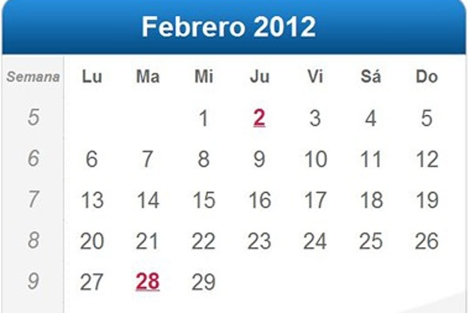
2012, leap year, therefore with 29 days in February, and Olympic, because the great four-year sport party will be held in the summer in the city of London. A festive balance with 52 Saturdays and 53 Sundays announces the calendar for 2012, which will close on Monday, December 31.
TOP 9:
What is the origin of the term `` leap ''?

In the days of Julius Caesar, the first day of each month was called calendas, the seventh was the nonas and the fifteenth day were the idus. Instead of saying February 28, the Romans said primum dies before Calendas Martias (first day before the March calendar). February 27 was the secundum dies before calendas martias (second day before the calendas of March), on February 26, third day and so on. To introduce its novelty, the leap year, Julio César intercalated one day between the sixth and fifth day before the calendar, that is, between the days that are today on February 23 and 24. This additional day was called bis sextus dies before calendas martias, that is, "second day sixth before the calendar of March" and the year it contained that day was called bissextus. In spite of this adjustment, the Julian calendar was still not precise enough and in 1582 it underwent some modifications, imposed by Pope Gregory X, through the very serious Inter Bull, by which the Gregorian calendar was created, which still applies today and, according to which, the years of the end of the century, such as 1700, 1800 or 1900 are not leap years, except when the number of the century is divisible by four, as happened in 1200, 1600 and 2000.
TOP 8:
They had a good leap year

Likewise, there are other facts that are marked by these beliefs, but quite the contrary to being misfortunes, are positive advances or inventions for Humanity. Instruments and events such as the telescope, the gas thermometer, the first car with an explosion engine, the birth of Gioacchino Rossini or the end of the war in Afghanistan, also happened in leap years. During all ages and centuries, events have continued to occur without realizing that they were doing it on an added day. Or perhaps Barcelona had not fallen into French hands had it not been because it was February 29, 1808? Or, perhaps, if the Union of Soviet Socialist Republics had realized the day they were in, it would not have offered peace to Finland in 1944. The answer seems obvious. Nor would the fact that on February 29 Michael Jackson won eight Grammys in 1984. would have any relevance with this addition in the calendar. Other events, possibly attributable to good "luck" or good "fortune", are the eight Oscars obtained in 1940 for the famous classic movie, "What the wind took away." Whereas, twenty-eight years later, in 1968 and four leap years later, the band The Beatles would be awarded a Grammy.
TOP 7:
Fatalities in leap year history

Apart from all the facts that have occurred over time just on this date, there is no evidence to indicate that they are attributable to the leap year. It must be recognized that several episodes from both previous and current centuries agree that they happened precisely on February 29. While it is true, four of the largest general strikes in Spain occurred in leap years, corresponding to the years 1916, 1936, 1976 and 1988, for the more empirical this is a mere coincidence. But this is not the only sign of "bad luck", because on a date like this the war in Iraq and Iran also began, a precedent that would come to add to the myths of the most credulous. The truth is that throughout history there are many catastrophes, which by chance or not, have happened in leap year: the sinking of the Titanic, the beginning of the Spanish Civil War, the conflict between Iran and Iraq or so-called murders such as de Gandhi (1948), Robert Kennedy and Luther King (1968), Lennon (1980) or Indira Gandhi (1984) 1976 - Coup d'etat in Argentina, with the known consequences,
TOP 6:
The bad reputation of leap years
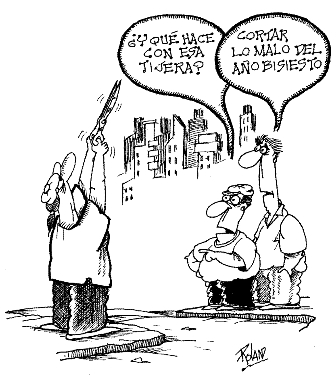
According to the popular tradition, leap years are bad, very bad and the past astrologers took off through the press, radio and television with all kinds of misfortunes related to the new year. Myths and beliefs regarding what could arise on 29 February have their origins in Roman culture. According to their tradition, this month corresponded to the festivities of the dead. This fatalistic thought has its origins in Roman culture, a product of which February, according to its tradition, was the month of the dead and pain in the times of the Empire. Following this he was subject to more calamities and add one day to this month, meant increasing agony, or openly calling for death. For the Romans, this belief was so fierce that the doors of the temples remained closed, nobody married or wanted to leave their homes, spending long days of confinement to avoid difficult situations. However, somehow they had to counteract so much fatality and bad energies, which is why the Lupercalia was celebrated every February 15, a feast in honor of the Roman god of fertility, Luperco, whose original idea of purification would be distorted by becoming a pretext for all kinds of sexual excesses and licenses, a situation that is not strange in the case of that culture. Later, the Catholic Church faced these extreme licenses and gave a different meaning to the date, taking out all the debauchery and putting in its place something more spiritual. Thus, advancing the Lupercalia in 24 hours, Valentine's Day was born, better known as that of lovers. For some people, and not only from this era, but also from past times, the arrival of the leap year is the occasion that gives rise to a series of legends and mysticisms. Even when very few know what it really means. One of the popular sayings says "leap year, sinister year", attributing many misfortunes and tragedies that have occurred throughout history to the arrival of this "fateful" day, leaving no room for mere coincidence.
TOP 5:
February 30
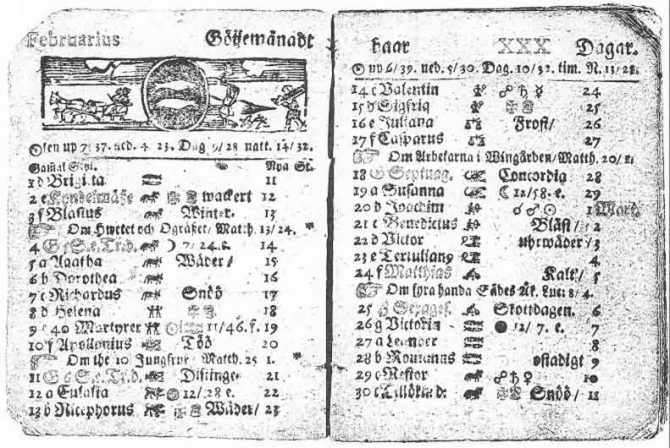
February has 28 or 29 days. However, three times throughout history, and only in certain countries, there has been a February 30. Sweden (then Finland was part of the kingdom of Sweden) followed the Julian calendar, but would gradually adopt the Gregorian calendar. To do this, from 1700 he would omit one day every year, to finally reach the Gregorian calendar in 1710 (Some sources claim that he would omit leap years over 40 years). Thus, one day was removed in 1700, but no further reduction was made, so that the so-called Swedish calendar was ahead of the Julian calendar by one day, but it was still ten days behind the Gregorian. The confusion came to an end when, in 1712, there were two leap days, bringing that year to February 30. That day corresponds to February 29 of the Julian calendar and March 11 of the Gregorian. In the end, Sweden adopted the Gregorian calendar in 1753. In 1929, the Soviet Union introduced a revolutionary calendar in which each month had 30 days and the remaining five or six days were holidays that did not belong to any month. In 1930 and 1931, there was a February 30 in the USSR, but in 1932 the months were the same as before.
TOP 4:
2000 leap year
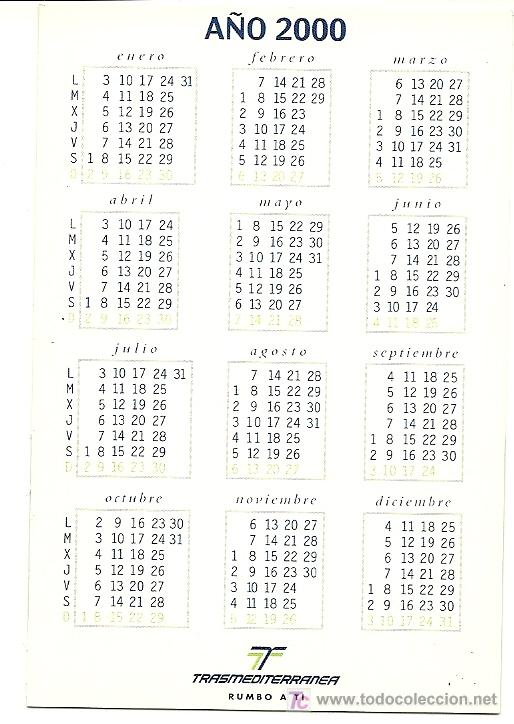
It is popularly said that there is a leap year every four years, since the rule says that a year divisible by 4 is leap year. For example 2000/4 = 500, since 500 is an integer, then the year 2000 is a leap year. But the thing is not so simple. The popular saying that every four years is a leap has exceptions. There are three rules that determine whether a year is leap year or not, and are given below: 1st - A year is leap year if it is divisible by 4. 2nd - Unless that year is divisible by 100, in the case that it is not leap. 3rd - But if the year is divisible by 400, then it is leap year. That is 1996, 2000, 2020 are leap, but 1900, 2002, 2100 are not leap. Therefore, there will be no leap like the year 2000 until 2400. Another curiosity of our current calendar.
TOP 3:
Mayan preditions
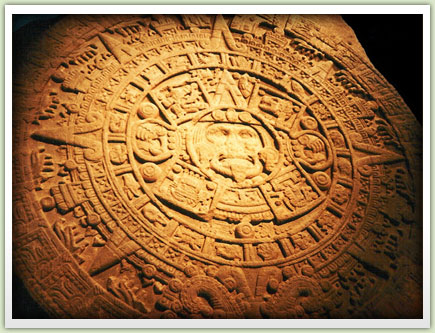
The fulfillment of the detailed predictions that the ancient Mayan Culture made for the period between the years 1992 and 2012 of our calendar raises a profound mystery and a disturbing question: Are we really living the end of a Cosmic Era and will we see within 7 years the dawn of one with a very different sign? The Mayan calendar ends abruptly on Saturday, December 23, 2012, 5,125 years after the "Fifth Sun" era began. According to his prophecies, the triggering physical cause is that the Sun would receive a ray coming from the center of the galaxy and emit an immense "radiant flare" that would transmit that radiation to Earth and the rest of the solar system. This event would precede the beginning of a new cosmic cycle. According to his calculation, 5 cycles of 5,125 years would have already taken place, completing a series of 25,625 years, a period very close to that of "the precession of the equinoxes", known as "Platonic Year" or "Great Egyptian Year", corresponding to a complete cycle formed by the 12 astrological ages (25,920 years). According to the Maya, on Earth each cycle of 5,125 years would have been the scene of the adventure of a Humanity - "a race" in its concept - and would have ended its destruction, followed by the regeneration that brings the next cycle or "Sun ". At the beginning of this there is a synchronization of the "breath" of all stars, planets and beings. On August 11, 3,113 BC, the Maya established the birth of the "Fifth Sun" - the current era - whose end would come in 2012. The Age of Water would have ended the Flood, the subsequent one with a flood of fire and ours , called "del Movimiento", would end with violent earthquakes, volcanic eruptions and devastating hurricanes. The mythology of the most diverse ancient cultures reflects the memory of catastrophic floods that took place about 12,000 years ago and of mysterious rains of fire, just over 5,000 years ago, which researchers like Maurice Cotterell associate with a large comet that touched the earth's atmosphere . The Mayan prediction also describes the 20 years before the first day of the "Sixth Sun" in some detail. This smaller cycle, which they called Katum, has already consumed almost two thirds of its total duration. This allows us to verify the extent to which their prophecies have been fulfilled so far and, consequently, decide whether their level of success deserves sufficient credibility to pay attention to them. The last Katum - called by them "the time of no time" - would have begun in the year 1992 of our calendar, after an eclipse of the Sun that this culture predicted for July 11, 1991 and that was fulfilled on time. In the Mayan concept it would be a transition period, characterized by profound cosmic, telluric and historical changes. It is curious to note that in September 1994 there were strong disturbances in terrestrial magnetism, with important alterations in the orientation of migratory and cetacean birds, and even in the functioning of aviation. In 1996, the Soho space probe discovered that the Sun no longer had magnetic poles but a single homogenized field. In 1997 there were violent magnetic storms in the Sun. And in 1998, NASA detected the emission of a powerful flow of energy from the center of the galaxy that nobody knew how to explain.
TOP 2:
Why does the leap year exist?
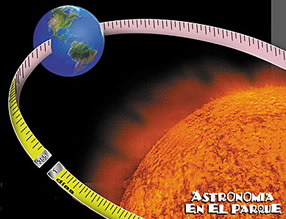
This additional day became necessary because the duration of the astronomical year - that is, a complete return of the earth in its orbit - is not exactly 365 days as the calendar year, but 365 days, 5 hours and 56 minutes. A year is the period of time it takes for the earth to go around the sun and approximately consists of 365 days, 5 hours, 48 minutes and 46 seconds, that is 365 days and a quarter minus 11 minutes and 14 seconds. It is usually rounded up saying it lasts 365 days and a quarter. That quarter of a day is accumulating, so that every four years one more day is added to the year, on February 29, being called leap year. Julio César established the 365-day calendar with leap years and Gregorio XIII reformed it as it is today.
TOP 1:
Born on February 29

--According to the data of the National Statistics Institute, in Spain there are about thirty thousand, 'leap'. The non-leap years celebrate their birthday on March 28 or 1. --In Ireland, babies born on February 29 receive a prize of one hundred euros. - People who are born on the 29th, are called "Leapers", word taken from the term "Leap year", leap year in English. On February 29, illustrious characters were born such as the English writer John Byron (1692), the Italian composer Gioacchino Rossini (1792), or Pope Paul III (1468). And to the altars rose on such date as this San Justo and San Macario. Without a doubt they are the clear exponent of resignation, since they cannot do anything to get what they would like. Being born on February 29 is something available to few and only happens every four years.












